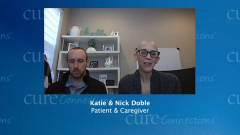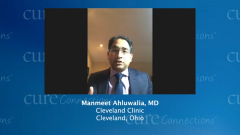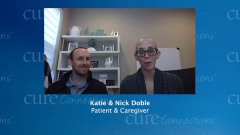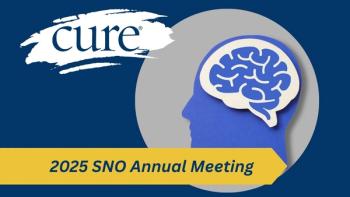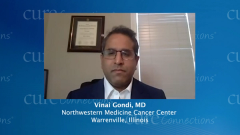
Improving Outcomes for Patients With Brain Metastases
Episodes in this series

Priscilla Brastianos, MD: I’m going to pose a question now to everyone. How can the medical team improve the care of patients with brain metastases? Perhaps we can start with having Ivy and Katie speak to that.
Ivy Elkins: Patients need information. That’s probably the most important thing. When you’re diagnosed, everything is thrown at you. I think patients need to understand what brain metastasis means, how that can impact their lives, if they’re asymptomatic versus symptomatic, what the options are for treatment, both short term and possibly long term. That needs to be laid out to people in an easily understandable way up front. I also think patients need to understand what the ongoing management is going to be for brain metastases, how often they’ll be scanned, if you have certain symptoms, when you should bring that up and maybe recommend moving a scan up earlier. But basically, what it comes down to is increased information.
Priscilla Brastianos, MD: I agree. We’ll have Ralph, after Katie has a chance to speak, but that’s exactly what the ABTA [American Brain Tumor Association] survey results showed us, too. But Katie, do you want to add to that?
Katie Doble: I agree with everything Ivy said, although I have already said I’m the patient who doesn’t want to hear all the worst-case scenarios. I don’t know how I would have responded if a doctor said, “Listen, I need you to be looking for these things,” because then I would be like, “Oh my god, I think that symptom happened to me last week, I think I have a brain tumor, I think you need to scan me right now.” But I think I’ve gotten a little bit better now that I’m seasoned at dealing with this.
Another thing that was shocking to me was, I’m not claustrophobic, I didn’t think I was, until I got a brain scan. That’s a very different scan. If you think, “Oh, I’ve done scans, I know what I’m doing,” and suddenly you’re going headfirst down a very narrow tube with a cage on your head, it’s terrifying. To this day, if I ever hear of someone having to go in for a brain scan, I’m always very careful with how I present information to other patients. But I always do say, “That one is a little harder for me, and I take a Valium for it.” I call that a cancer perquisite. But Nick has to drive me to those scans now because they still, to this day, I get a lot of anxiety around that particular scan.
Priscilla Brastianos, MD: I think your experience is not a rarity, I think other patients have had similar experiences. Ralph, do you want to add to that?
Ralph DeVitto: Sure. I think you all know this very well, but patients and caregivers trust you and respect you. When you take the time to sit down and give them clinical trial treatment options, they listen, they absorb it. But it’s important that you also involve your team, your nurses, and your social workers, so that when they leave the office, they trust you, but sometimes they don’t fully understand everything that you have said. Having your support staff following up, working with them on clinical trials is important. Second, the survey shows how much they lean on, and want to know more about, organizations like the ABTA. You can trust us to work with them where they are and then afterward. People like Nick, who is a phenomenal caregiver, we can talk to him about whether he’s interested in being a mentor to others after he feels like Katie is at a place where he can give time to other caregivers.
Priscilla Brastianos, MD: I completely agree, Ralph. Dr. Gondi, did you want to add to, how can we as a field improve the care of a patient with brain metastases?
Vinai Gondi, MD: As I listen to Ivy, Katie and Nick speak, it reminded me, at least in my clinical experience, that when systemic cancer goes to the brain, there are a lot of emotions, understandably, there’s a lot of fear, there’s a lot of confusion, consternation. And it’s not just on the patient’s perspective, but even some medical oncologists. What I’ve appreciated is that sometimes medical oncologists, as a brain tumor specialist, and I’m sure Dr. Brastianos, you probably do the same, I just say, “You know what, I’ll take care of the brain. Everything above the neck, I’m going to watch and keep an eye on, and everything below the neck, your systemic oncologist can keep an eye on it, and we’ll do it together.” That collaboration becomes useful. Just during this Zoom call, I’ve gotten a couple of texts from medical oncologists about patients we have, and I think that gives patients and their providers some sense of calm and comfort, that everything is taken care of up here, that we’re OK. If I have a headache, call that doctor who specializes in brain stuff and let him know, so that they can address it. I do think that there is tremendous opportunity to help and augment the care of patients and their providers, especially when we’re talking about the brain.
Raymond Sawaya, MD: Of the two concepts I tried to cover, one is that the neurological team, whether they are a surgeon, radiation oncologist, or whatever, they have the knowledge and expertise pertaining to the brain and to the central nervous system. That team is bringing that expertise to help the medical oncologist treat the patient in a complete way. The second concept is that it’s a complicated world, and one specialist within the neuro field cannot handle all the problems of brain metastasis. It does require a whole team of a surgeon, oncologist, radiation, radiologist, and so on and so forth. Bringing all these together in the brain metastasis concept is a great advantage for patients.
Priscilla Brastianos, MD: I completely agree. On that note, we can be providing more support to caregivers. Nick, you already alluded to that earlier, but tell us more about how we can help caregivers.
Nick Doble: This morning was a good example, my first question to Kate was, “How are you doing?” I think that’s a nice question also to ask a caregiver, how are they doing. I think I would like to see more proactive support offered, and if you do need support, here are avenues you can use to find support and information. Then what do you need as well as a caregiver, what can we do to support you, because we’re here to help the patient. The more that we can be supported to be in a better place to help the patient, the better that could be for us. Even Ivy talked about how she was the patient, she looked after the kids. I’m sure while her husband was working, that was a huge impact on him, as much as there was when I had to go to Pittsburgh, change my schedule, and be there to support Katie in the hospital every day. It would be great for a little more attention to the caregiver, to make sure things are well there, because we’re here to help the patient, and we’re part of the overall story and on the journey together.
Priscilla Brastianos, MD: That’s so important, Nick, thanks for saying that. Again, thank you to Katie, Nick and Ivy for sharing these deeply personal journeys. We’re so inspired by your stories. Thank you, and we hope that you’ll continue to do well and respond to therapies. I think we’ve reached time. Thank you to everyone who participated in today’s Cure Connections® program. I want to thank Ivy and Katie for sharing your story, and my colleagues, Vinai Gondi, Ray Sawaya, Manmeet Ahluwalia, and of course, Ralph DeVitto, for this incredible discussion. To our viewing audience, we hope you found this presentation to be useful and we’ve provided you with practical information that you can discuss with your health care provider. Thank you so much, everyone.
Transcript Edited for Clarity







